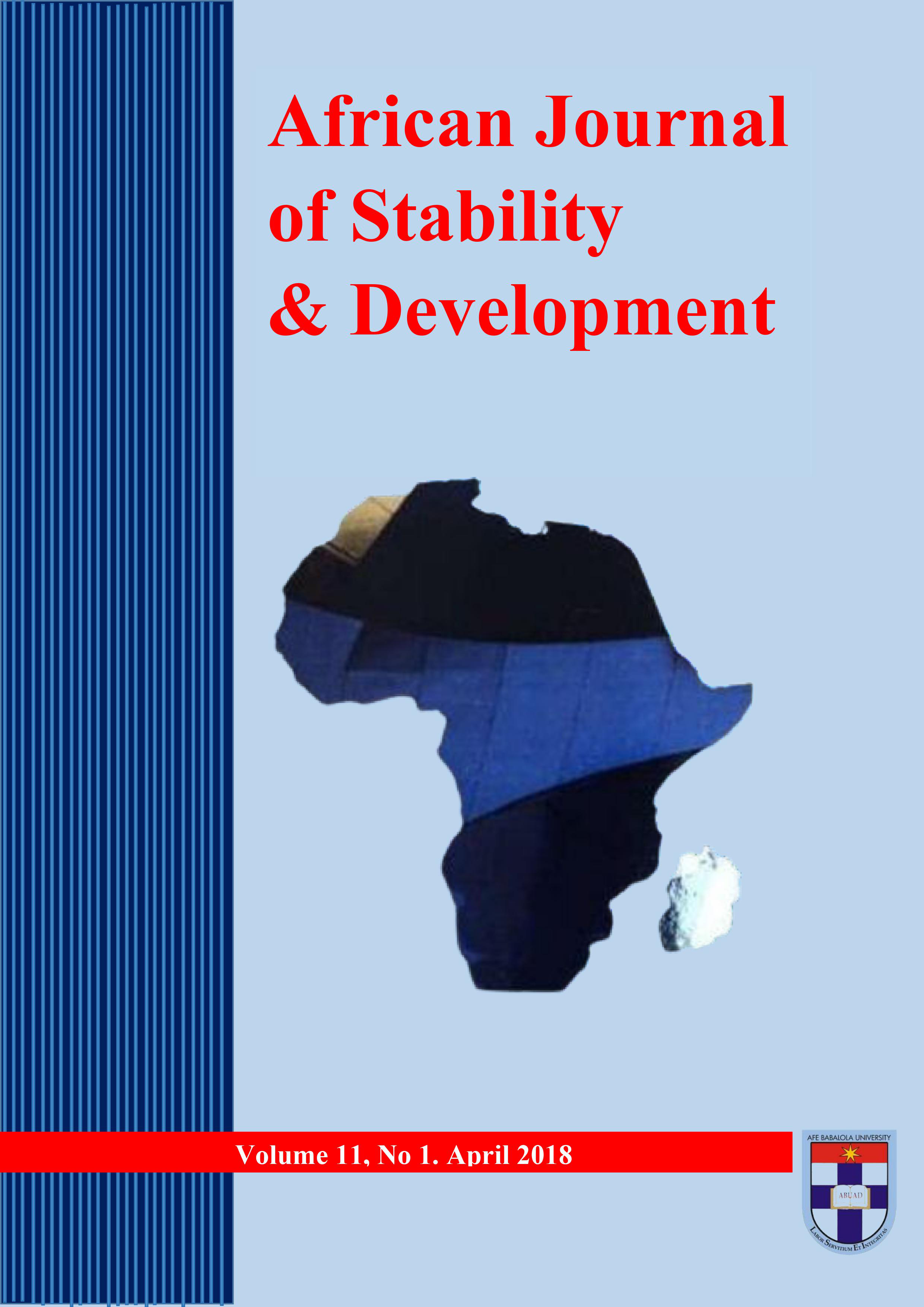Prevalence and Patterns of Offences among Undergraduate Students in Nigerian Private Universities
Main Article Content
Abstract
Studies of offenses and crimes among Nigerian undergraduates are mostly focused on state-owned universities in Nigeria and may not reflect the realities of private universities. With recent explosion in the population of adolescents in private universities in Nigeria, there is need to understand the nature and dynamics of offenses and crimes among adolescents in this sociological space. Therefore, this study investigated the patterns and reasons for students’ offences and crimes using AA University as a case study. A mixed method research combined survey and case study research designs was adopted. Three hundred and fifty of 16- item survey questionnaires were returned from the 365 distributed to AA UNIVERSITY students across 34 departments in six colleges. Participants were selected using stratified random sampling. Two focused group discussions were held with a total of 20 students. Social Learning Theory was used as theoretical framework for the study. Descriptive statistics was used to analyse the quantitative data, while content analysis was employed in analysing qualitative data. The first four most prevalent offences and crimes are vandalism (83%), alcohol offences (74%), drugs and substance abuse (72%), and loitering (69%) (VADL). The first four offences and crimes most committed by female students are vandalism (77%), alcohol offences (77%), loitering (71%), and drug and substance abuse (66%) (VALD), while they are vandalism (89%), examination malpractices (83%), drug and substance abuse (77%) and fraud (73%), (VEDF) among male students. Alcohol is more popular among female students than males. Across age groups, drug and substance abuse and examination malpractices seem to increase with age. Alcohol offences and drug and substance abuse (committed by at least about 70%) are both very high among the age groups. Nine of the 16 listed offences are committed ‘very often’. These are theft (100%), drug and substance abuse (95%), possession of hard drugs (90%), vandalism (87%) and tobacco offence (87%), loitering (85%), simple assault or battery (79%), possession of stolen property (78%), disorderly conduct (76%). Examination malpractices (73%) and alcohol offences (63%) are committed ‘often’, while the others are committed rarely. Peer influence, reported as the reason for committing 75% of listed offences and crimes, and low moral value constitute the main major drivers of offences and crimes in private universities. This confirms the propositions of the theoretical framework of the study. The rate of offences and crimes in AA University is very high, most of them are committed very often, and are mainly driven by peer pressure and poor moral value among the students. Curbing the menace of offences and crimes among undergraduate in private universities, therefore, requires collaborative effort by parents, universities, and the larger society. Parents need to instil in their children a healthy ego in order to prevent the bad peer influence. Also, they need to instil in them good moral values. Universities need to put in place mechanisms to discourage, prevent and punish offences and crimes. The society needs to promote right values through appropriate punishment and reward.
Downloads
Article Details
Authors hold the copyright of all published articles except otherwise stated.
References
Balogun. (1976). Youths and Substance Abuse. Ile Ife: University of Ile Ife Press.
Bandura. (1977). Social Learning Theory. Englewood Cliffs: NJ, Prentice Hall.
Bandura, A. R. (1961). Transmission of Aggression through the Imitation of Aggressive Models. Journal of Abnormal and Social Psychology.
Baughman, E. (1981). A Study in Adolescent Behaviour. Adolescence is a Social Construction.
Buhler. (1954). Growth at Adolescence. The Adolescent.
Eya. (2001). Adolescents and Physical Changes.
Hall, G. S. (1904). The Adolescent Psychology. Toronto: New York Academic Press.
Koops, W. (2012, October 9). Jean Jacques Rousseau, Modern Developmental Psychology, and Education. European Journal of Developmental Psychology, 9 (Issue sup1: Jean Jacques Rousseau 300th Birthday Anniversary Commemoration Supplement). doi:https://doi.org/10.1080/ 17405629.2012.730996.
New Collegiate Dictionary. (1977). Adolescence and Growing Up. Chicago: Webster.
Price, B. (2009). Insights and Implications: Pediatric Nursing. Body Image in Adolescents.
Siegel, M. (2006). Violent Crimes and Substance Use.
Sofronoff, K. D. (2004). A Cognitive Model of Adolescent Suicide and Risk Taking; Out Of Options. USA: Cambridge University Press.
W.H.O. (1999). The Tobacco Atlas. Switzerland: Mackay, J




